In 1856, two years prior to Minnesota statehood, two adventurous brothers from Klausdahl, Germany (near Hannover), bid farewell to their homeland in search of a better life.
Jacob and William Vollbrecht migrated separately to America. Once Jacob arrived in Hanover – initially called Vollbrecht Mills – he homesteaded 160 acres on both sides of the Crow River, and wrote to his brother in Atlanta to come north.
|
William arrived in Vollbrecht Mills two years after Jacob, bringing with him his new wife and stepdaughter from Mobile, Alabama. William, who lived out the remainder of his life in Hanover, died at the age of 70. |
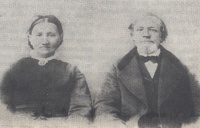 |
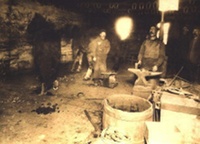 |
Jacob, who never married, and who also remained in Hanover until his death, was 73 years old when he died in 1894. The first business in town was a blacksmith shop as Jacob was a blacksmith and ironworker. |
Vollbrecht Mills Officially Becomes Hanover
 Early records indicate the small community named Vollbrecht Mills did not become Hanover until much later. Vollbrecht selected the name in commemoration of his German birthplace.
Early records indicate the small community named Vollbrecht Mills did not become Hanover until much later. Vollbrecht selected the name in commemoration of his German birthplace.
The little village on the banks of the Crow River continued to prosper, and the mandated documented town population counts necessary for incorporation was done in 1891. The village had a population of 206.
Having satisfied incorporation criteria, Hanover’s officials presented a petition to the Wright County Commissioners to officially be incorporated as the Village of Hanover.
The incorporation election voting occurred on October 9, 1891 with Jacob and William Vollbrecht, along with Hubert Zaun presiding. Twenty-eight ballots were cast in favor of incorporation with a single vote against.
The small German settlement prospered punctuated by new homes, churches, and a school. By the early 1900s, Hanover had burgeoned to nearly 350 residents.
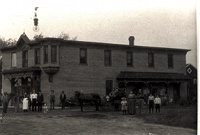 Less than ten years later, the Great Northwest Magazine (Dec. 1909), proclaimed the little town on the Crow River as “the brightest inland city with its cement sidewalks, electric lights, water power, graded streets, and live, energetic, pushing and progressive set of businessmen.”
Less than ten years later, the Great Northwest Magazine (Dec. 1909), proclaimed the little town on the Crow River as “the brightest inland city with its cement sidewalks, electric lights, water power, graded streets, and live, energetic, pushing and progressive set of businessmen.”
Located seven miles from Albertville, a train and shipping point to and from St. Anthony Falls (Minneapolis), a daily stage operated between Hanover, Albertville and Rockford. “It has a daily mail and is connected by telephone with all sister cities of the county,” continued the magazine account.
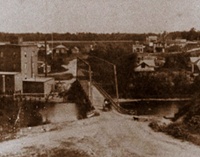 Jacob and William spearheaded an effort to build bridges that would withstand the Crow River’s temperamental spring water levels. The iron truss bridge – with assistance from the town and county – was constructed in 1885 with the Morse Bridge Co. designers, alongside the flourmill.
Jacob and William spearheaded an effort to build bridges that would withstand the Crow River’s temperamental spring water levels. The iron truss bridge – with assistance from the town and county – was constructed in 1885 with the Morse Bridge Co. designers, alongside the flourmill.
The bridge not only linked travelers from the Hennepin County side to the Wright County side, but also spurred new growth and vitality for Hanover. The iron Pratt through truss bridge was placed on the Federal Register of Historic Places in December 1979. It is now a pedestrian bridge and backdrop to many Hanover community events, including the annual Caroling at the Historic Bridge Event, hosted by the Hanover Historical Society, and a 5K run, part of the yearly Hanover Harvest Festival activities.
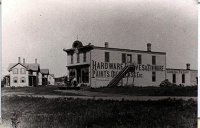 Hanover may not have swelled its borders or evolved into a large booming town on the prairie, and although there are few original structures remaining, she does have plenty of cultural resources worthy of preservation packed within her slim frame. Counted among these riches are many of the first heritage farmlands, wetlands and open spaces, the Crow River with its iron Pratt through truss bridge, architectural craftsmanship featuring interior and exterior facades, events and livelihoods of significant persons associated with her history, and a varied legacy of educational/cultural artifacts and testimony.
Hanover may not have swelled its borders or evolved into a large booming town on the prairie, and although there are few original structures remaining, she does have plenty of cultural resources worthy of preservation packed within her slim frame. Counted among these riches are many of the first heritage farmlands, wetlands and open spaces, the Crow River with its iron Pratt through truss bridge, architectural craftsmanship featuring interior and exterior facades, events and livelihoods of significant persons associated with her history, and a varied legacy of educational/cultural artifacts and testimony.
(Excerpted in part from Safe From the Outside World: a Social History of Hanover, Minnesota written by Hanover resident Mary Coons.)
